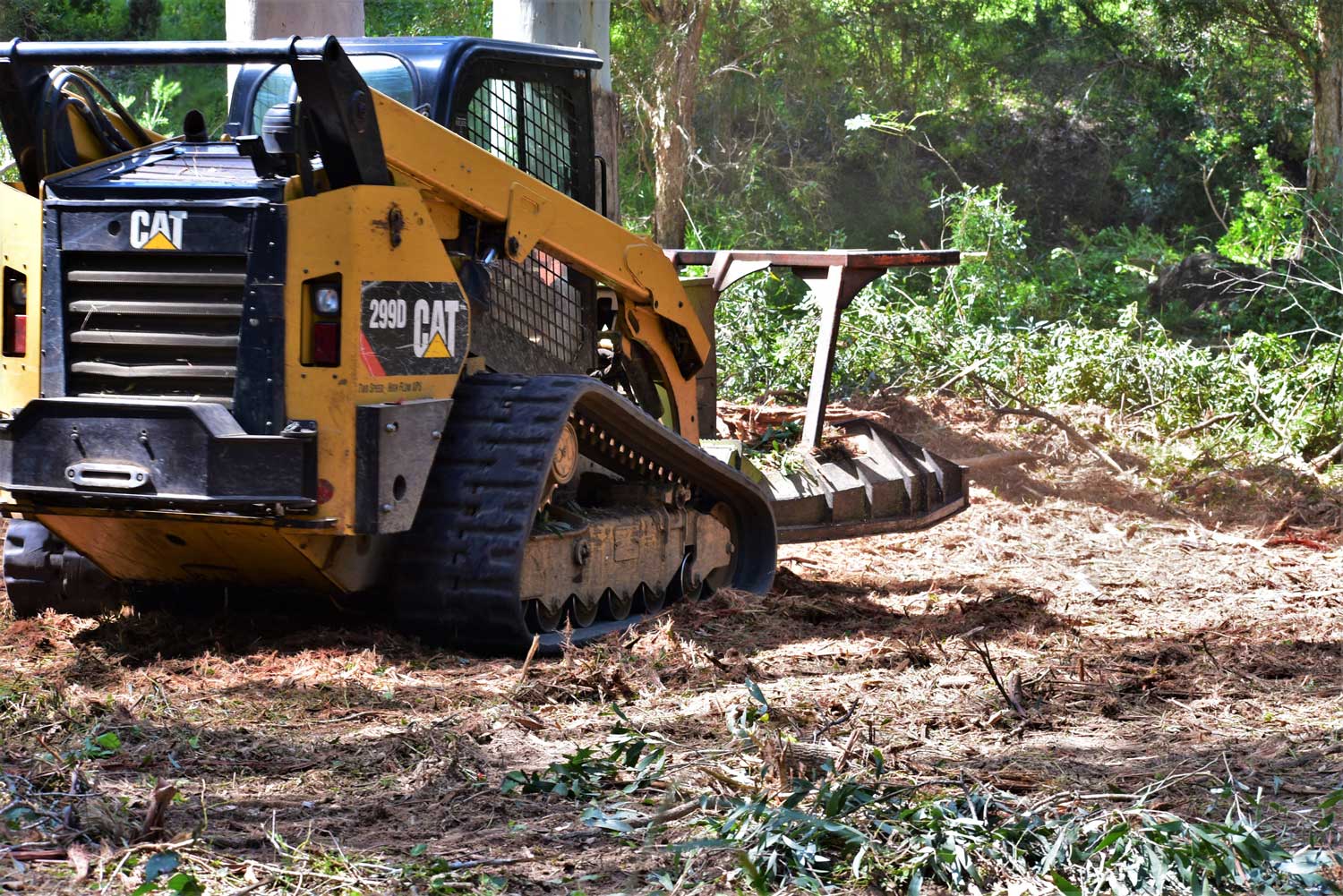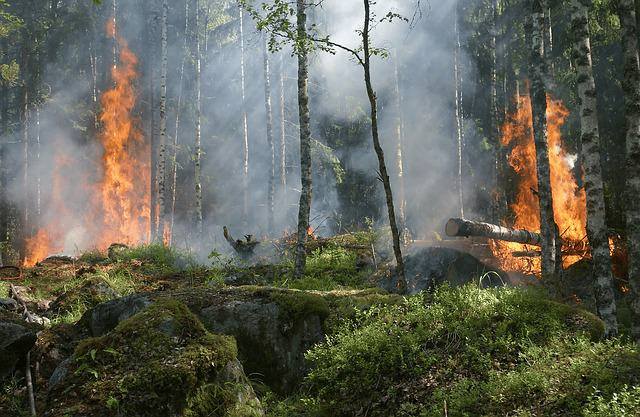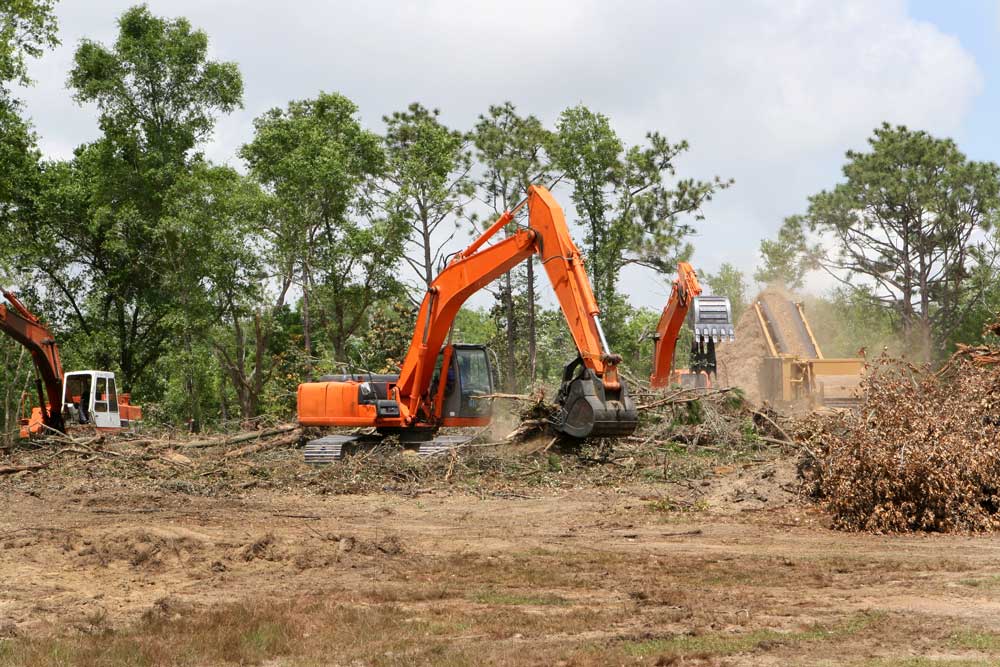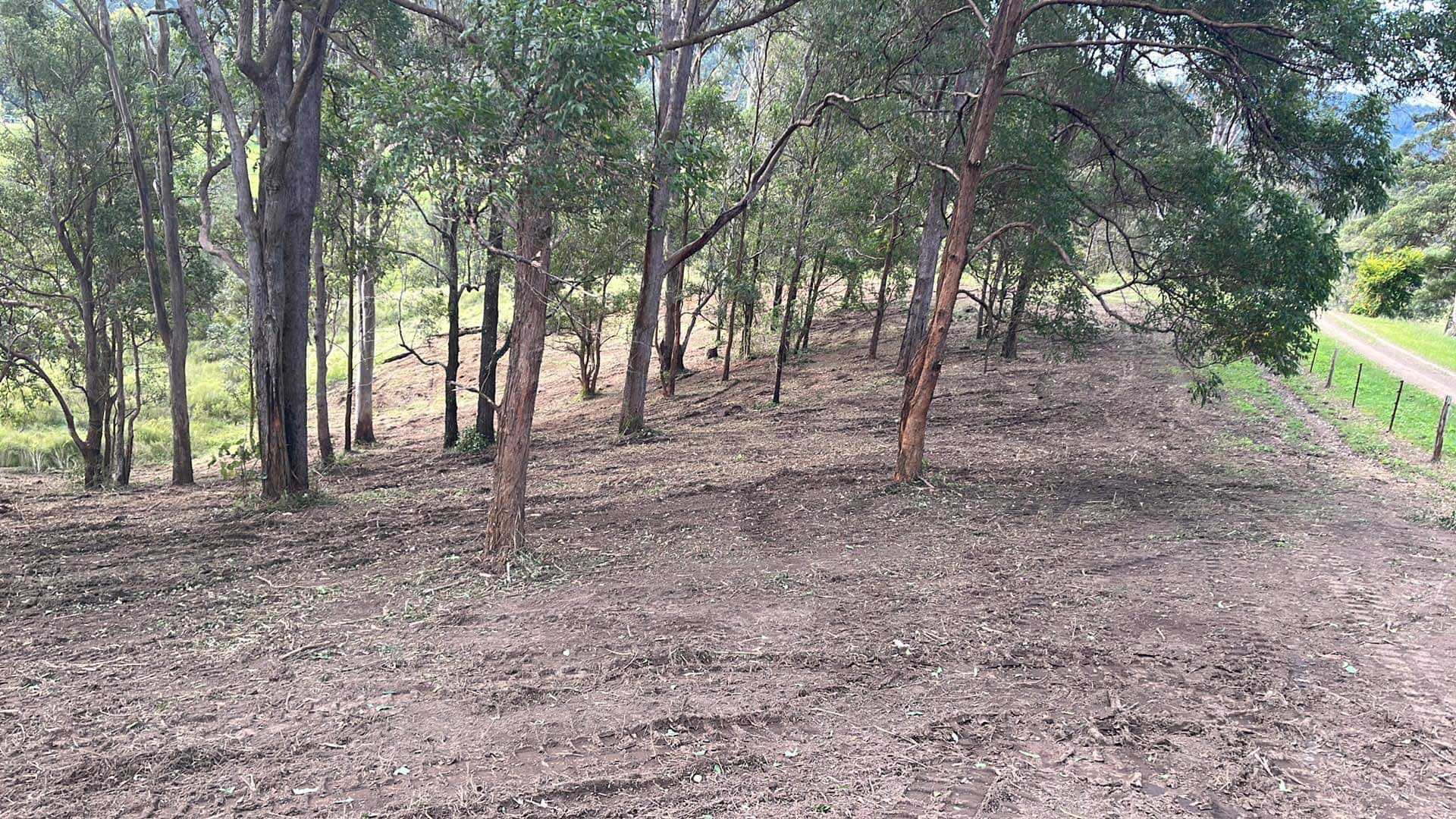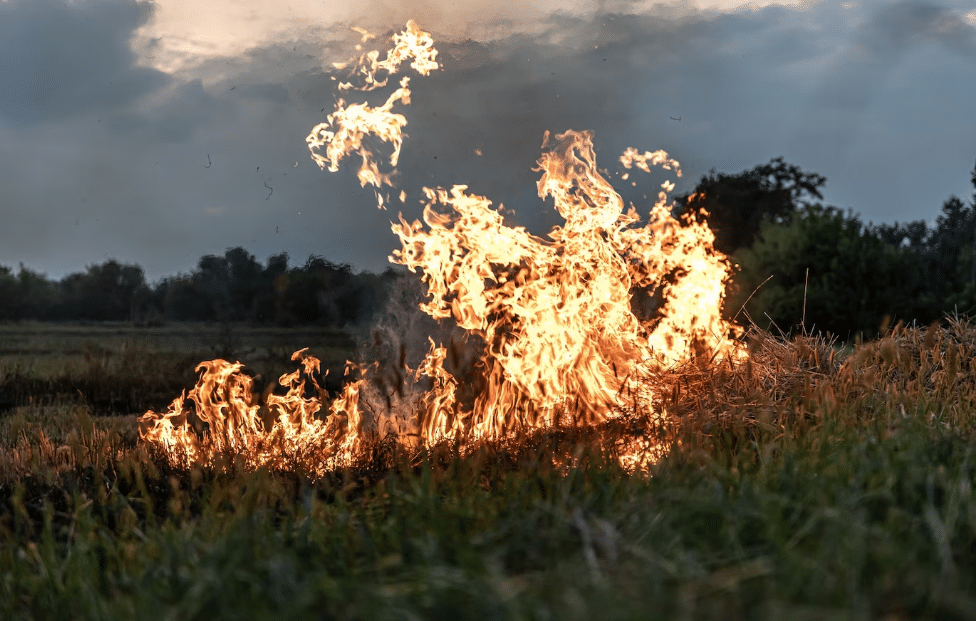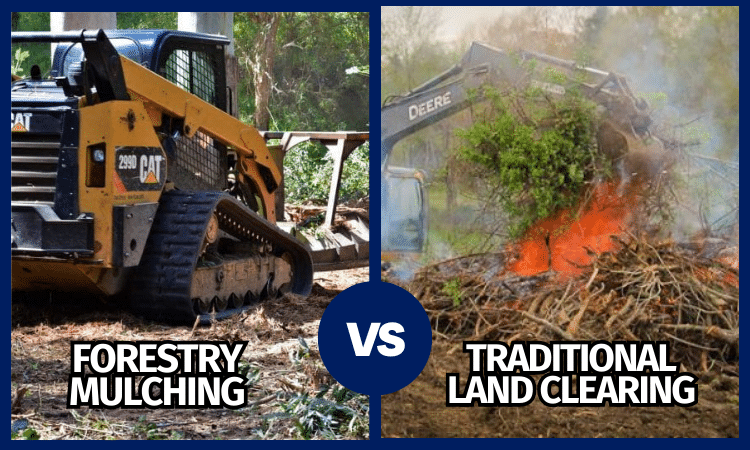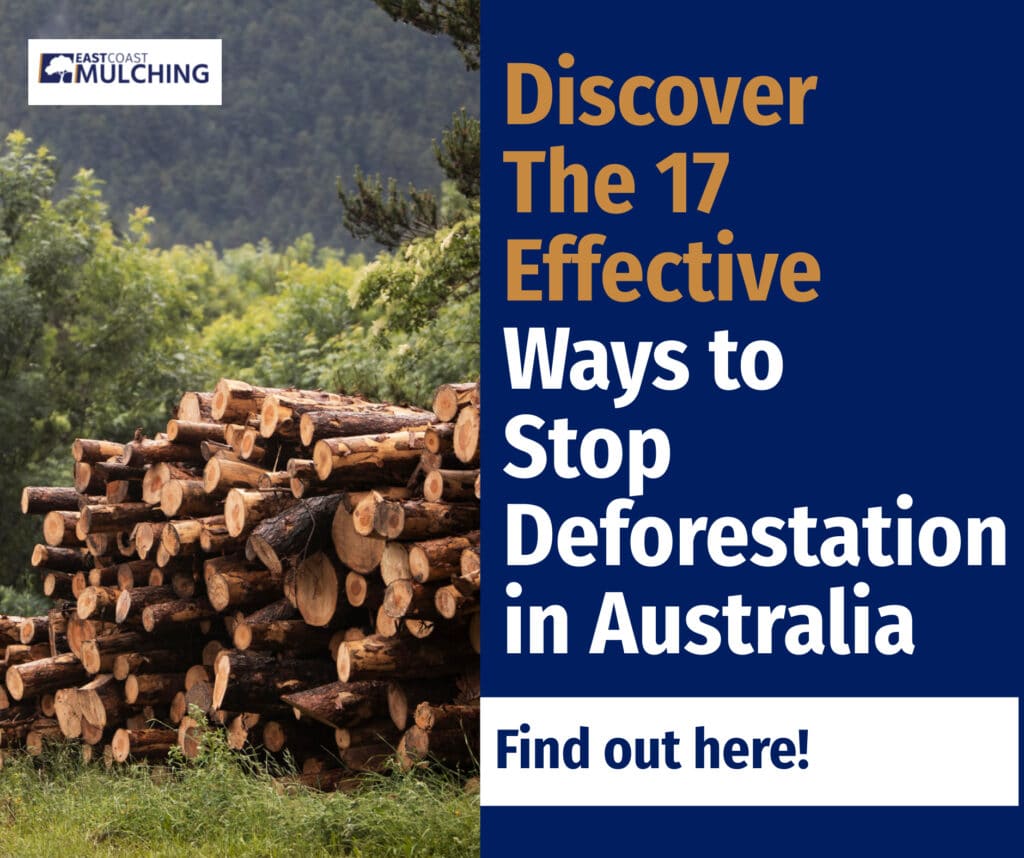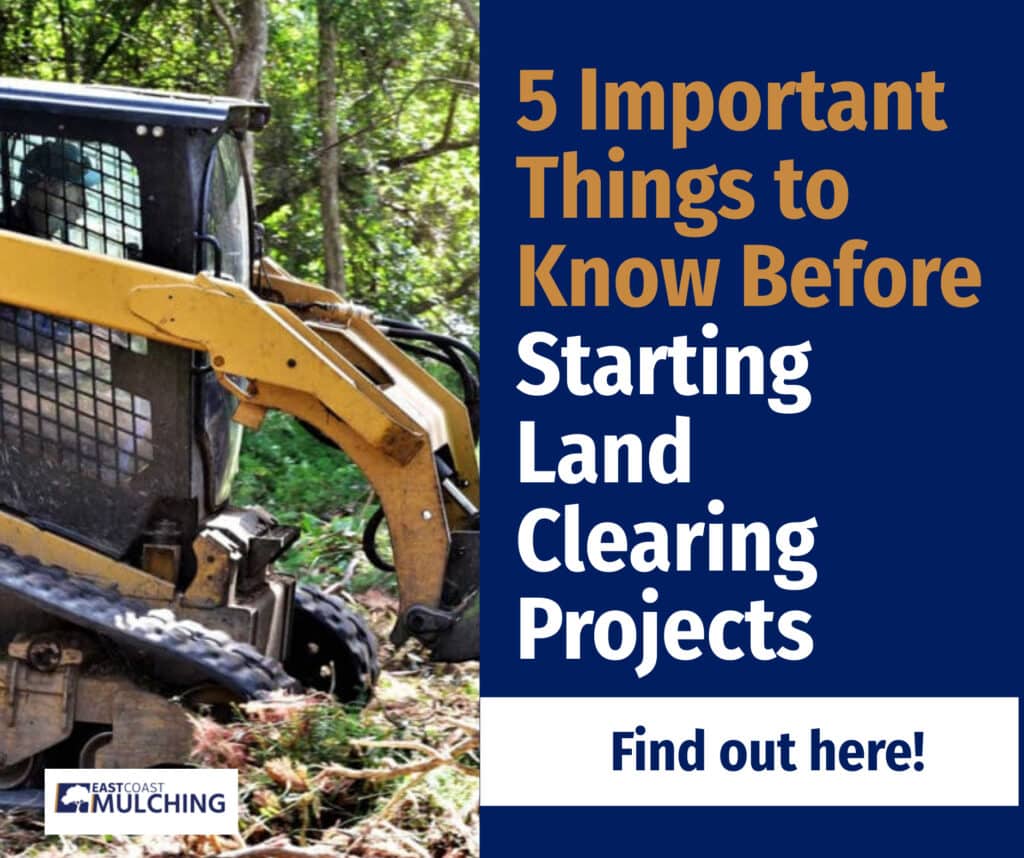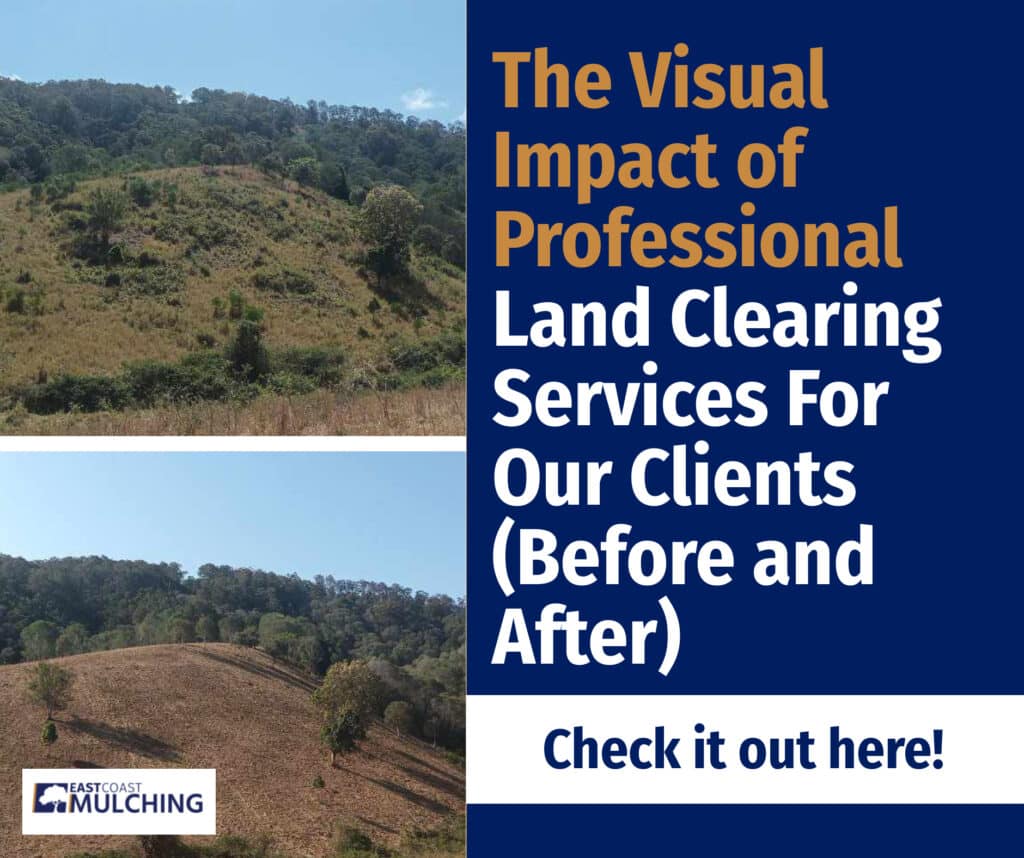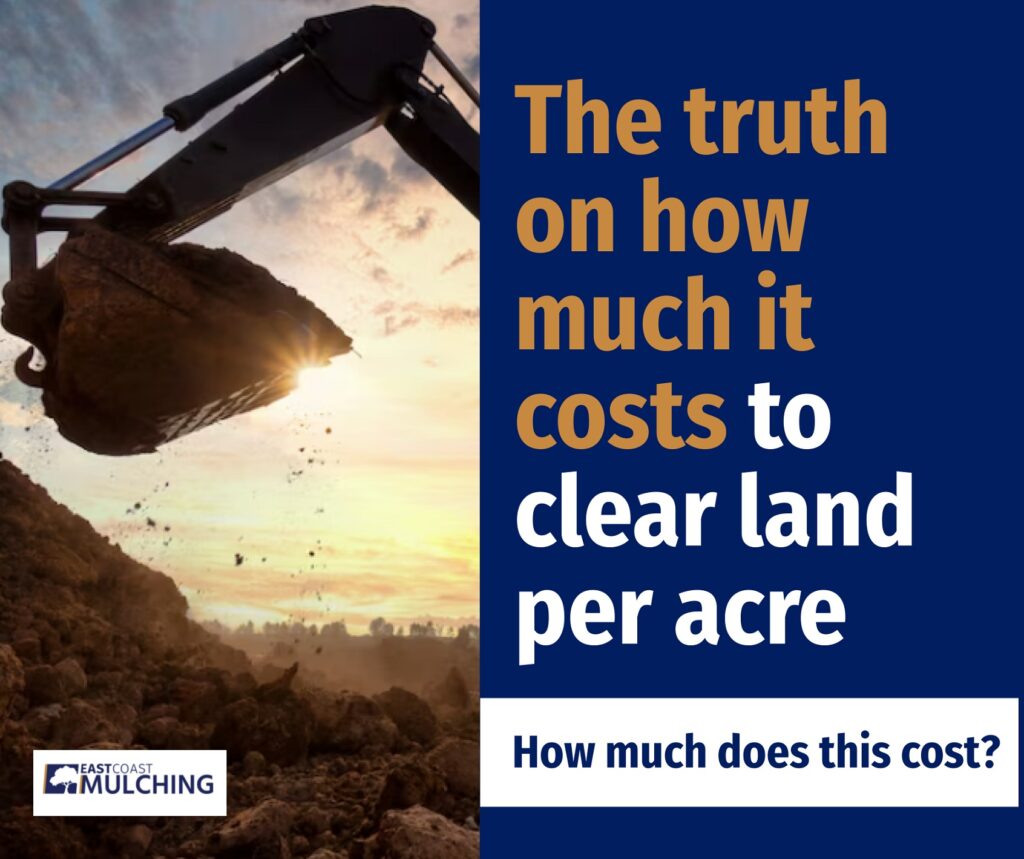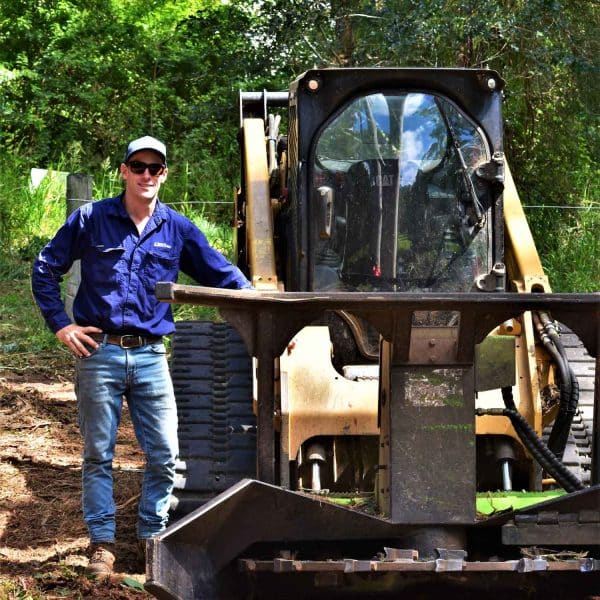In this article, we’ll examine different land clearing methods to determine which is superior and why. The methods we consider are forestry mulching, prescribed burning and clearing and grubbing.
Much goes into good land clearing. We’ll consider effectiveness, sustainability, cost-efficiency and safety. Through this comparison, you should be able to decide which clearing technique is best for your needs.
Forestry Mulching vs Traditional Land Clearing
Forestry Mulching Services
Definition. Shredding vegetation onsite.
Effectiveness. Easy to use with good quality and targeted results.
Sustainability. Highly sustainable.
Cost-efficiency. Low cost due to less machinery and staffing needed.
Safety. Very safe with an understanding of forestry mulcher use.
Prescribed Burning Services
Definition. Using controlled burns to eliminate vegetation.
Effectiveness. Comprehensive results, but expertise is necessary.
Sustainability. Promotes regeneration but risks erosion.
Cost-efficiency. Relatively cheap, requiring little machinery.
Safety. Extensive safety precautions are necessary.
Clearing and Grubbing Services
Definition. Cutting down and uprooting vegetation.
Effectiveness. Thorough results but difficult to do without professional help.
Sustainability. High risk of erosion and long-term damage to the land.
Cost-efficiency. Can be expensive with a lot of heavy machinery used.
Safety. Lots of heavy machinery can create onsite risks.
Definitions
Forestry mulching involves using forestry mulching machines to shred trees, shrubs, and stumps into fine mulch and grass cuttings. This process is done onsite. The mulch and grass clippings are spread over the ground as a protective cover. This cover aids in soil enrichment and reduces erosion and fire potential.
Prescribed burning applies fire under controlled conditions. It seeks to reduce fuel loads, manage forest ecosystems, and promote native species. This decreases the likelihood of severe bushfires. It mimics natural fire cycles to maintain ecological balance and enhance habitat quality.
Clearing and grubbing removes trees, shrubs, and debris from a site. It then digs out roots, stumps, and other sub-surface obstructions. This process prepares land for construction, farming, or other uses by creating a cleared and level area.
If you would like to learn more or have any questions regarding land clearing, contact East Coast Mulching.
Effectiveness
Forestry mulching is a straightforward method. It requires minimal preparation and can be quickly deployed. Mulchers are versatile, functioning well even in poor weather and uneven terrain. This ensures no area is left uncleared. This method allows for selective clearing. This offers precise control over the land management outcome. Targeted clearing will enable you to preserve native vegetation. Mulching grass through mulch mowing helps foster native growth.
In contrast, prescribed burning demands a solid understanding of fire control. It’s essential to know how to manage the burn to cover the intended area without risking uncontrolled bushfires. Safety protocols are critical. The process must be carefully monitored, which can limit its accessibility for non-professionals.
Clearing and grubbing deliver thorough results that are good for construction projects. But its complexity typically excludes DIY efforts. It involves multiple heavy machines, making it a less feasible option for individuals. The process is labour-intensive. It’s a significant time investment as each piece of vegetation is removed and disposed of. This often requires additional steps compared to mulching.
Forestry mulching and prescribed burning are more eco-friendly and less disruptive to the soil. Clearing and grubbing is the most invasive. However, it provides a clean slate for development. Each method has its advantages. Mulching is the most user-friendly, while burning requires specific expertise. Clearing and grubbing is thorough but time-intensive and less environmentally friendly.
Overall winner: Forestry Mulching
Sustainability
Forestry mulching is known for its eco-friendliness. It enhances land health while minimising ecological disruption. By preserving root structures, it stabilises the soil, curbing erosion effectively. The resultant mulch layer acts as a shield. It conserves soil moisture and diminishes bushfire risk. As the mulch decomposes, it enriches the soil with nutrients, fostering new growth. With fewer machines, there’s a lower carbon footprint. This bolsters its sustainability.
Prescribed burning, when done correctly, also offers environmental advantages. It preempts bushfires by eliminating excess vegetation that could fuel such events. This method recycles nutrients back into the earth and maintains the ecosystem’s natural cycle of growth and decay. If not managed properly, it can damage the soil. This can lead to potential soil erosion and habitat loss.
Clearing and grubbing can pose significant environmental challenges. The aggressive removal of plants and trees disrupts the soil structure. This increases the likelihood of erosion. The heavy machinery required for this method also contributes to a larger carbon footprint. The intensive nature of the process can compact the soil and harm the land.
Uprooting vegetation can also leave soil exposed to the elements. This exacerbates erosion and reduces the land’s natural resilience. While effective for preparing land for development, clearing and grubbing is the least sustainable method. It needs careful consideration and mitigation strategies to minimise its environmental impact.
Overall winner: Forestry Mulching
Cost-efficiency
Forestry mulching stands out for its cost-efficiency. It requires just one machine, significantly reducing manpower and fuel expenses. The user-friendliness of mulching equipment makes DIY projects feasible, offering substantial cost savings. Post-clearing labour is minimal. There’s no need for debris removal or soil restoration.
Prescribed burning is another cost-effective method. The primary expenses are fuel, labour, and safety measures. It’s an economical approach, especially considering its speed and less need for mechanical equipment.
In contrast, clearing and grubbing is the more expensive option. It demands a fleet of heavy machinery and a larger workforce, driving up initial costs. After clearing, additional work is necessary to fill excavations and address erosion, adding to the expense. Disposal of debris further inflates the budget. This method is less DIY-friendly, limiting opportunities for cost reduction.
Forestry mulching and prescribed burning offer cost advantages through reduced labour and equipment. Mulching, in particular, eliminates the need for costly post-clearing processes. Clearing and grubbing has extensive machinery and labour requirements and post-clearing work. This creates a more significant financial burden, making it a less attractive option for those on a budget.
Overall winner: Prescribed Burning
Safety
Forestry mulching has an excellent safety record. Modern mulching machines have advanced safety features such as GPS tracking and traction control. These are crucial for navigating challenging terrain safely. The process is swift, with the mulcher instantly processing and depositing debris onsite. This negates the need for additional hazardous debris management methods like burn piles.
Prescribed burning, while cost-effective and beneficial for ecosystem management, carries inherent risks. Fire is unpredictable, even in controlled conditions. There’s always a risk of it spreading beyond intended boundaries. This poses threats to operators and surrounding communities. However, the safety procedures for prescribed burns are well-established. Comprehensive resources on safety procedures are widely available.
Clearing and grubbing, involving extensive labour and heavy machinery, presents various safety concerns. Workers risk heat-related illnesses such as heat stroke, especially in hot weather. The more machinery in operation, the higher the risk of accidents. These can range from minor injuries to fatal incidents. Additionally, the subsequent use of burn piles for disposing of vegetation can introduce fire hazards. This requires strict monitoring and control measures.
Each method has a distinct safety profile. Forestry mulching leads in terms of operator safety and reduced risk of accidents. Prescribed burning requires meticulous safety protocols to mitigate its inherent risks. Clearing and grubbing, with its intensive labour and machinery use, needs rigorous safety oversight. This highlights the importance of proper training and safety equipment to prevent accidents.
Overall winner: Forestry Mulching
Forestry mulching vs Traditional Land Clearing: Overall winner
Effectiveness (out of 15)
Forestry mulching: 15
Prescribed burning: 12
Clearing and grubbing: 13
Sustainability (out of 10)
Forestry mulching: 10
Prescribed burning: 9
Clearing and grubbing: 7
Cost-efficiency (out of 10)
Forestry mulching: 9
Prescribed burning: 10
Clearing and grubbing: 7
Safety (out of 15)
Forestry mulching: 14
Prescribed burning: 11
Clearing and grubbing: 13
When comparing forestry mulching and traditional land clearing methods, there are many factors. Forestry mulching combines effectiveness with ease of use for those looking for a DIY solution. It is also the most sustainable method and is very safe. Clearing and grubbing struggles with poor sustainability and low cost-efficiency. However, it does ensure a thorough result. Prescribed burning has inherent safety concerns but stands out as the most cost-efficient.
Overall winner: Forestry Mulching
Do you have a land clearing project? Try forestry mulching services today.
(GET A FREE QUOTATION!)


